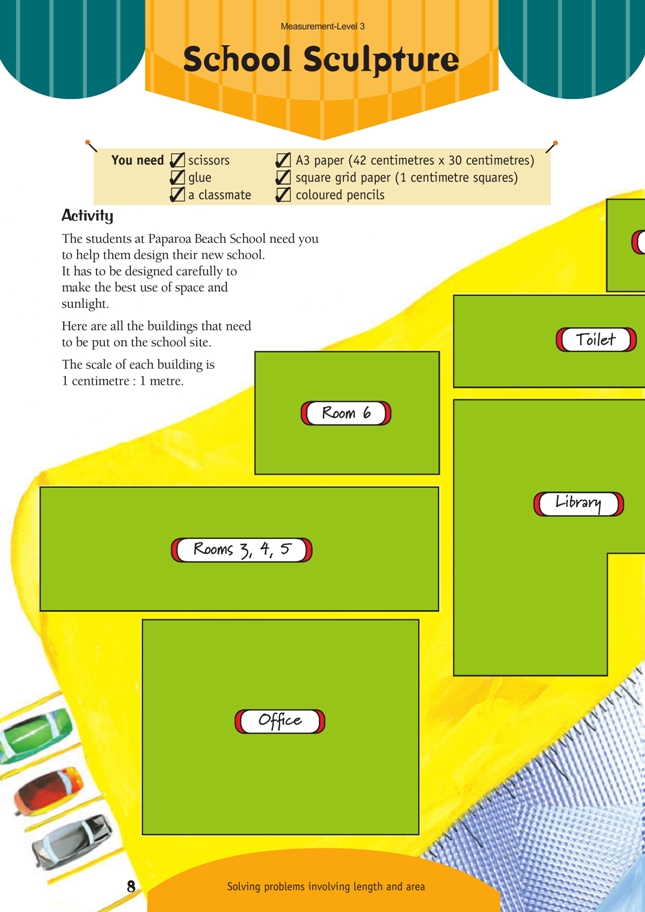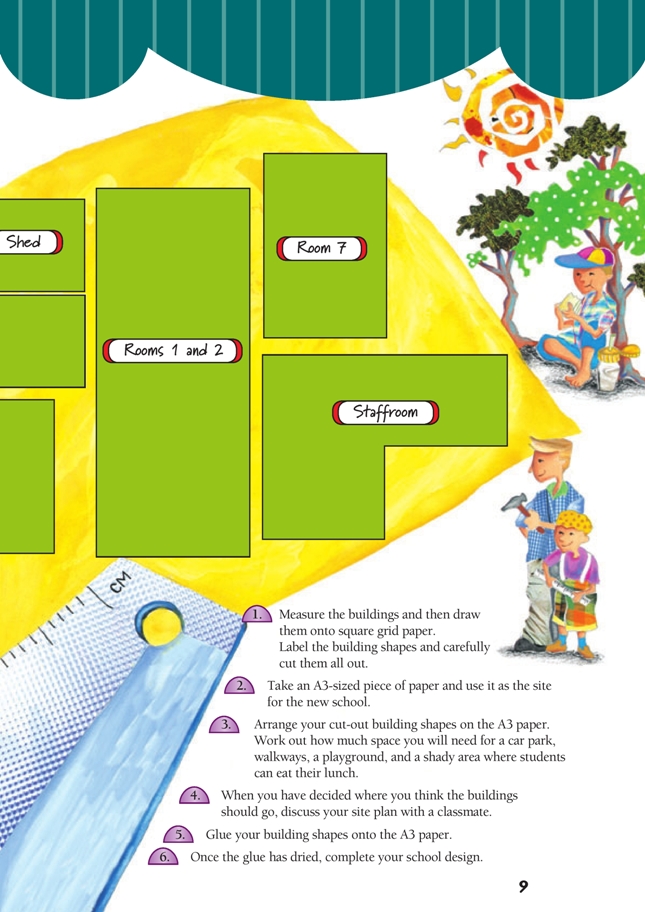This is a level 3 measurement strand activity from the Figure It Out series.
A PDF of the student activity is included.
Click on the image to enlarge it. Click again to close. Download PDF (362 KB)
solve problems involving length and area
square grid paper (1cm squares)
scissors, glue, coloured pencils
FIO, Level 3, Measurement, School Sculpture, page 8
a classmate
In this activity, students use measurement to problem solve. The key challenge is to make the best use of space while positioning the buildings to make the most of the sun.
You may need to discuss the path that the sun takes in the southern hemisphere as it moves from east to west to show why the north side is the warm side and the south is cold. The students can choose which direction the compass points on their plan, but they should show this on the plan. They should also decide the position of the main entrance to the school.
If this activity is set up as a design competition, students may be more motivated.
Brainstorm some ideas about how to decide what “best use” means. You could encourage students to consider trees, gardens, paths, types of playgrounds, pool, sheds and an incinerator, sports fields, covered eating spaces outside, halls, staff parking, and pedestrian access. Useful hints might include:
“Can people move around the school easily and without getting muddy?”
“Can parents and visitors find the office easily?”
“What buildings should be near each other?”
“Where are the best places for the library and the pool?”
“Does your plan have a special feature like a slope or a gully that can be landscaped?”
“Is the sports field big enough?”
“Will there be enough parking for staff and visitors?”
Make sure that the students estimate and then calculate the areas for each item on their plan, using the scale provided, otherwise they will not have achieved the measurement objectives.
Answers to Activity
Answers will vary.

